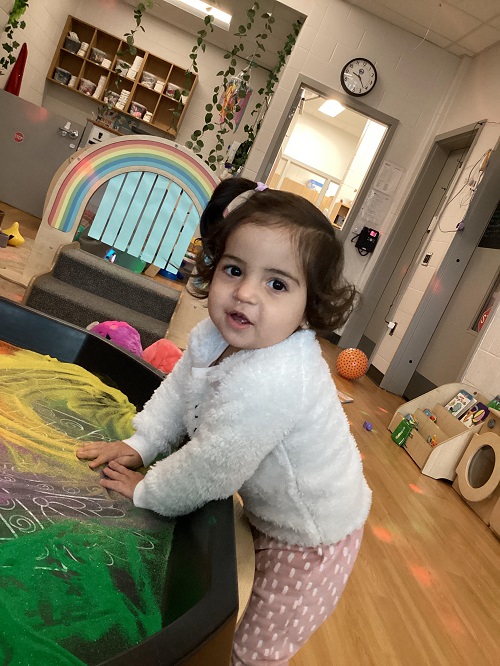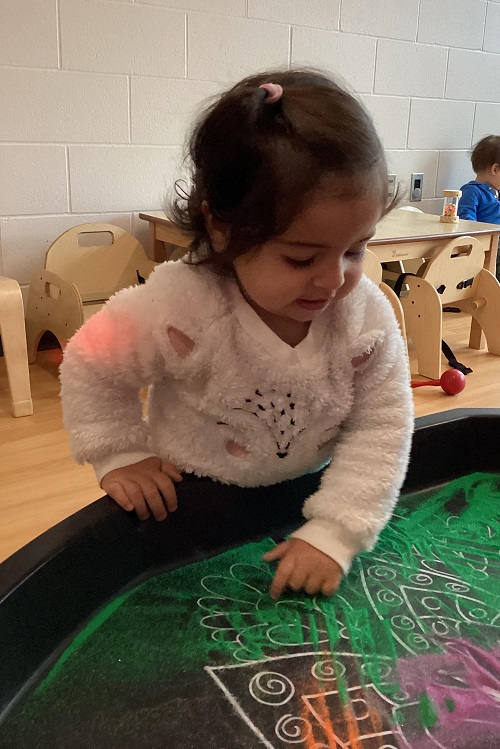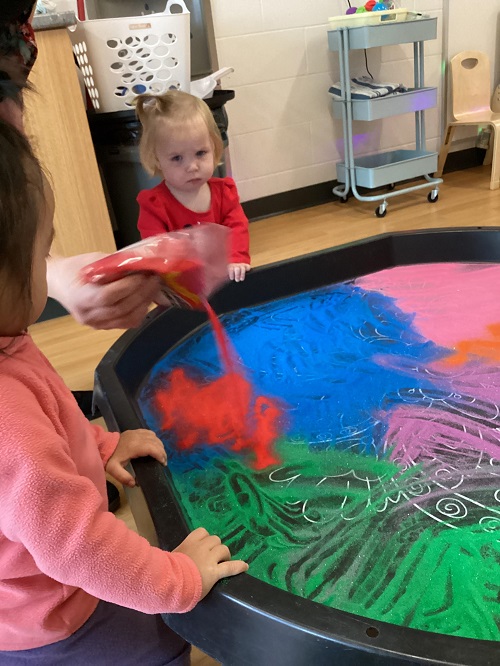On the 9th of November, the infant program celebrated Diwali which is the Indian festival of lights. Our little friends and educators were so excited to experience this special event. This year Diwali fell on Sunday November 12th. To preserve cultural heritage and values, as well as providing a joyful and educational experience for the children, we turned off the lights and brought out several light toys and played Diwali music in the background.
We started the celebration by drawing a Rangoli in the tuff tray which caught a lot of curiosity. The educator added different colours of sand in the tray. It created a colourful tuff tray and we could see so much excitement from our little friends’ eyes. They quickly gathered around and starting pointing their fingers over to the tray. To introduce the activity, the educator explained that Rangoli means “an array of colours” in Sanskrit, which is a traditional Indian art form dating back some 5000 years to the pre-Aryan period. It is known as Kolam in Tamil. Rangoli is a multi-coloured floor decoration that symbolises wealth, joy, and prosperity, as well as thanksgiving to deities. Regularly, Rangoli is made using materials like rice powder, brock powder, chalk powder, flower petals and coloured sand. Moreover, we are so lucky that having an educator in our team who is from India, she told many fun stories related to Diwali and the meaning behind each colour. For example, red represents love and happiness, yellow represents knowledge and learning, and green represents nature and new beginnings.
There were a couple of infant friends who had big smiles and pointed to the tray the moment they saw it. Owen said, “Wow” a couple of times. A fun capture during the activity was that many children were trying to move the sand around to reveal the Rangoli symbol underneath and then showed us their thrilled faces when the Rangoli showed. They were fully engaging with their hand and some of the friends even put the sand on their bodies and in the air.
Our favorite part of this activity is that the children fostered their sense of touch while they felt the texture of the sand. Furthermore, there is more learning we can pull out which is nurtured colour recognition as the educator labeled the colours of the sand.












